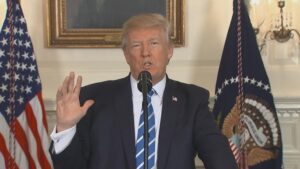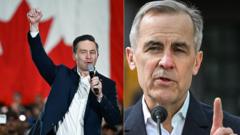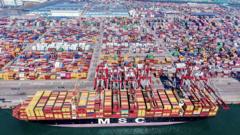As Democratic state attorneys general challenge President Trump's tariff program, historical and economic perspectives suggest that these "reciprocal tariffs" may revitalize American manufacturing and secure fair trade practices.
Trump's Tariff Initiative Sparks Controversy But Promises Economic Resurgence

Trump's Tariff Initiative Sparks Controversy But Promises Economic Resurgence
Legal battles brew over Trump's new tariffs aimed at rectifying trade imbalances, yet early signs indicate potential economic growth.
President Donald Trump’s ambitious tariff initiative, designed to address long-standing trade inequities, is currently embroiled in legal disputes initiated by Democratic state attorneys general. Nevertheless, historical context and initial economic signals indicate that Trump’s strategy of imposing “reciprocal tariffs” could provide substantial advantages for American workers and industries.
Challenges from Opposing Attorneys General
Last week, a collective of Democratic attorneys general launched a lawsuit, contending that the tariff measures enacted by the Trump administration overstep presidential authority. The legal arguments assert that the administration has overreached by applying broad import duties without the explicit consent of Congress.
In response, Trump’s team cites precedents in trade legislation, such as the Trade Expansion Act of 1962 and the International Emergency Economic Powers Act, which grant the executive significant leeway when it comes to national security and economic protection.
Tariffs as a Historical Economic Strategy
Critics often label tariffs as hazardous, yet historical precedent suggests otherwise. In the 19th century, the U.S. depended heavily on tariffs, not income taxes, to sustain the federal government and promote emerging American industries. Figures like Abraham Lincoln and Theodore Roosevelt championed tariffs to bolster domestic manufacturing and defend workers against competitive foreign markets.
In more contemporary contexts, targeted tariffs—such as those on steel and aluminum during Trump’s first term—successfully revitalized critical sectors, generated jobs, and enhanced supply chain autonomy. The early impact of the newly announced “Liberation Day Tariffs” is already emerging, as companies express intentions to relocate production back to the United States to avoid elevated import expenses.
A Committed Approach to Fair Trade
The Trump administration’s fiscal philosophy is concise: genuine free trade is only viable when it is equitable. For years, various nations, including China, Vietnam, and some European countries, have manipulated trade norms, subsidized their industries, and inundated U.S. markets with artificially low-priced goods. Trump's tariffs intend to rebalance this dynamic, pressuring trade associates to lower trade barriers or face repercussions.
In an encouraging development, more than 130 nations have engaged with U.S. officials to negotiate more favorable tariff terms as a direct response to this new policy, illustrating that assertiveness in negotiations yields quicker resolutions compared to prolonged bureaucratic processes.
Final Thoughts
While the ongoing legal challenges from Democratic states navigate the judicial system, President Trump’s tariff measures are deeply embedded in both U.S. history and economic rationale. Rather than being perceived as a reckless venture, the “reciprocal tariff” approach represents a return to the pragmatic strategies that once established America as a preeminent manufacturing nation.
Faced with the reopening of American factories and a surge of global initiatives to renegotiate unfriendly trade agreements, the preliminary assessment is unmistakable: Trump’s tariffs are yielding positive results.




















